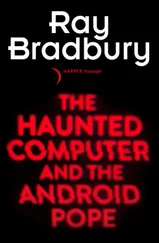Then one day, later in 1979, Bill drove across the bridge from Berkeley and down the peninsula to Cupertino, where Apple’s headquarters were located. He wrote four different Pong -like games, put them together with an intriguing little graphic leader, copied the program onto a diskette, and took the diskette with him. The people at Apple looked at his software, liked it, and told him they wanted to add it to the demonstration disk they included with every machine they sold. Nowadays, such offers are known as “bundling deals,” and they can make programmers rich. Apple offered Bill a printer worth about $750 as payment for Penny Arcade, and he was happy to get it.
The main thing about programming microcomputers is that it’s fun to do, but it’s always nice to get paid as well. That’s the way all great programmers start out—intrigued by the idea that they could earn money from such an enjoyable hobby. Six or seven years ago, however, it never really occurred to any of us just how lucrative programming could be. We learned eventually that we not only could make a living at it, but a very decent living at that.
At about the same time that I was beginning to consider having my first game published, Bill began to think about making his sideline into a full-time career: “Although it took me a month to write the first programs I sold, I knew that when I got up to speed I could create twenty of them a year. And that meant I could make around $20,000, which was a very decent wage compared to what I could have pulled down in a computer science department at a university or as a programmer for a mainframe computer company. So I started grinding out games.”
Despite his “factory approach” to software production, the games that Bill started producing weren’t bad. In fact, they were visibly superior to almost every other product on the market. They were just as visually intriguing as his first. He kept Apple enthusiasts supplied with new and exciting software, and these early games brought Bill up to speed on assembly language and game-programming techniques.
“My parents went to Hawaii that summer, and I had the whole house to myself,” Bill recalls. “I wrote four programs in three months and took them to Hayden Publishing. They liked the programs, but they couldn’t decide on the provisions of the contract quickly enough for me. Three months later I took the programs to a company called Softape. I wanted to sell them outright for $2000 each. They liked them but they didn’t want to buy them. Then I met a fellow who wanted to sell them for me on a royalty basis. He was a sort of frontier ethic, software gold-rush kind of entrepreneur. He had what was then a new idea— he gave demonstration copies of my programs to the managers of computer stores. In Christmas of 1979, a year after I bought my Apple, he brought me my first royalty check—$6000 for my first month!”
That was more money than Bill made in two semesters as a graduate teaching assistant. If it kept coming in at that pace, it would be more than the head of the computer science department earned. It didn’t go quite that fast, however. The first year that he devoted himself to turning out programs for a living, 1980, Bill made around $10,000 rather than the $20,000 he had hoped for at first. But the year after that, 1981, he made $80,000. And he was now making a name for himself in a field that was just beginning to blossom in the marketplace. Computers were selling faster and faster. And as the rate of computer sales increased, so did the sales of good programs. By 1982-83, Bill was making in the neighborhood of half a million dollars a year.
For a while, in 1980, Bill worked at Apple, along with his old friend Andy Hertzfeld. He became friendly with people like Wozniak and Jobs, who had been his heroes. The fun factor had jumped an order of magnitude, and the challenges were more intriguing every day. And financially, he was rocketing past what his computer science colleagues were making in academia and the mainframe world. But to Bill, programming offered more than just money and even more than sheer enjoyment. It also offered what he wanted most of all: glory.
He had seen what Jobs and Wozniak had done. He had seen what programmers like Bob Bishop and Paul Lutus had done. Like any other artist, he wanted a broader canvas, a more ambitious scope for his vision. He wanted to create the state-of-the-art program in the world of Apple software. He then stopped writing all of the short, sweet, throwaway games that had been his bread and butter, and he took a risk. And this was before he started making the big money. He spent several months working on one masterpiece, a best-selling program that lives in software legend under the name Raster Blaster .
As usual, Bill’s idea was to take one of his personal interests and combine it with his programming skills to create something new. In this case, it was his interest in playing pinball. To most people, the old-fashioned electromechanical pinball games are the very antithesis of computer games. Pinball is very mechanical and physical, with steel balls and bumpers and lights and buzzers. Computer games are electronic and more perceptual than physical. Instead of steel balls, computers manipulate dots of light. But Bill realized that the ball, the flippers, the effect of gravity, the “bounciness” of the bumpers—all the essential elements of pinball— were, in principle, capable of being simulated by a computer program.
“I wanted to make one great video game,” Bill told me when I asked if he consciously set out to create a best-seller. “The idea of creating a ‘hit’ in the commercial sense really wasn’t part of the atmosphere back then. I realized that video games were getting kind of boring, from the point of view of the programmer, if not yet the consumer. I could crank them out and make a good living, but they weren’t very satisfying. I started working on Raster Blaster when I was at Apple, in late 1980, and I finished it in March ’81. When I realized how good it was, in comparison to everything else that was out there, I started thinking about marketing it myself.”
Bill is actually a pretty modest guy, especially in comparison with some of the unabashed egotists that seem to abound in the software game. When he says that he realized how good it was, he is simply stating a fact. Everyone in the software industry realized that it was a significant programming breakthrough. Besides the idea of designing a computer version of a pinball game, Bill’s creation included a lot of important innovations that inspired other programmers to try to top Raster Blaster . The game exhibited a graphic complexity that had not been seen before on a microcomputer (although arcade-type video games, with their dedicated graphics hardware, had attracted attention and money with dazzling graphics).
By April 1981, the software market was maturing rapidly. Bill had had a series of bad experiences with existing software publishers and wasn’t happy with the contracts he was offered by various distributors and publishers for his products, so he decided to take matters into his own hands. He started a software publishing company—Budgeco, it was called—to market Raster Blaster, and his sister and brother-in-law set up an operation in their house, not too many blocks away from Bill’s place in Piedmont. Bill happened to be correct in his initial estimation of Raster Blaster’s impact. It was the third program to (temporarily) dislodge VisiCalc— at that time, the all-time best-seller in microcomputer software history—from Softalk’ s list of the top thirty Apple programs. (The other programs to temporarily outsell VisiCalc on the Apple were Tony Suzuki’s Alien Rain, a Broderbund publication, and Nasir Gebelli’s Space Eggs, a Sirius product.)
Читать дальше










